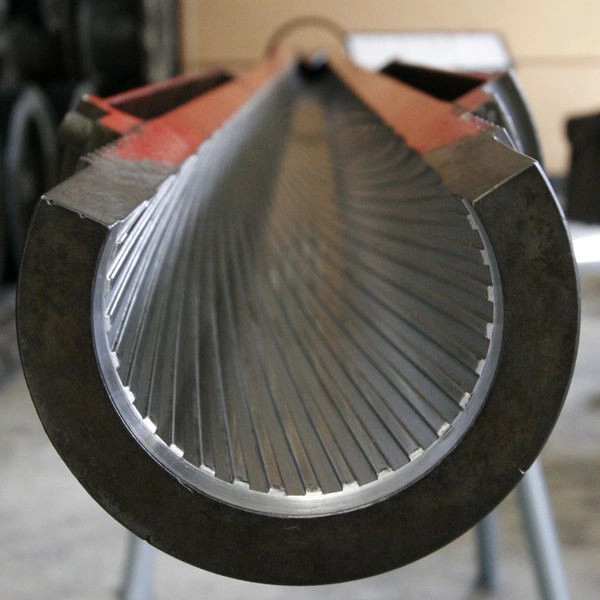But why you might ask? Why might I want to use a progressive press, traditionally used for the bulk manufacture of pistol ammo for a precision rifle?
Well, simple. Speed and efficiency.
While I don’t mind reloading, it’s not something I do for the sheer pleasure of doing – so if I can find a way to speed up the process and minimise my time manually pulling a press arm down, again and again, I am all for it, so when I first heard/saw that the 6.5 Guys were doing their reloads on a 550 – I was intrigued.
I already had the 550, for, no surprises – reloading pistol ammo on. Reloading for the pistol was primarily an economic decision – if you are shooting up to 100 rounds a weekend of 9mm, it very quickly becomes cheaper to buy components and equipment and reload yourself (not so much if you factor in labour costs, but let’s not look too hard into that). So I already had the base equipment.
It became obvious quickly that they were not using the 550 like I was, so I researched their setups (like interviewing them, and who they took their cue from, David Tubb) and starting putting together my own.
The Overall Idea
The 550 is a multistation reloading press. Like most progressives – the idea is you do multiple jobs within the reloading process at the same time. I the case of the 550 – you have four stations that can each hold a die or tool.
The 550 is generally set up for reloading 9mm with these steps:
- Stage 1 – deprime, resize, reprime
- Stage 2 – drop powder from powder measure
- Stage 3 – seat projectile
- Stage 4 – crimp brass
The idea being is that once the machine is fed and loaded up, you are dropping out a new round each time to pull the handle down.
However, there is a lot going on at once, and the design of the system comes with a few issues when it comes to precision reloading.
- Tolerances – specifically tool head and ram/shell holders
- Powder measurment ‘inaccuracy’ – it is volumetric not weight based
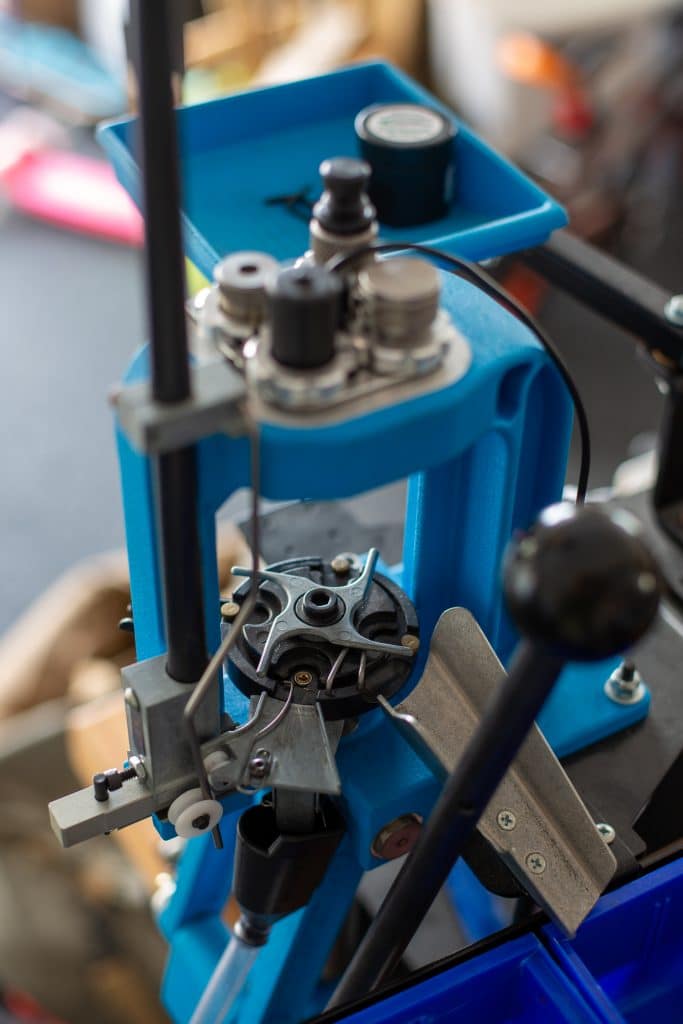
Sorting the Basics
So – starting near the bottom – the shell holder plate is notorious for being wobbly – especially with the normal quick install and no tweaking. There is a combination of a few small replacement parts and proper setup that help reduce this though.
I put a replacement bearing kit into it from Hit Factor Supply, taking care to get a good amount of tension on the system when realigning and reinstalling the plate.
At the same time, I also installed a spent primer chute from Uniquetek – more as a convenience than a performance upgrade.
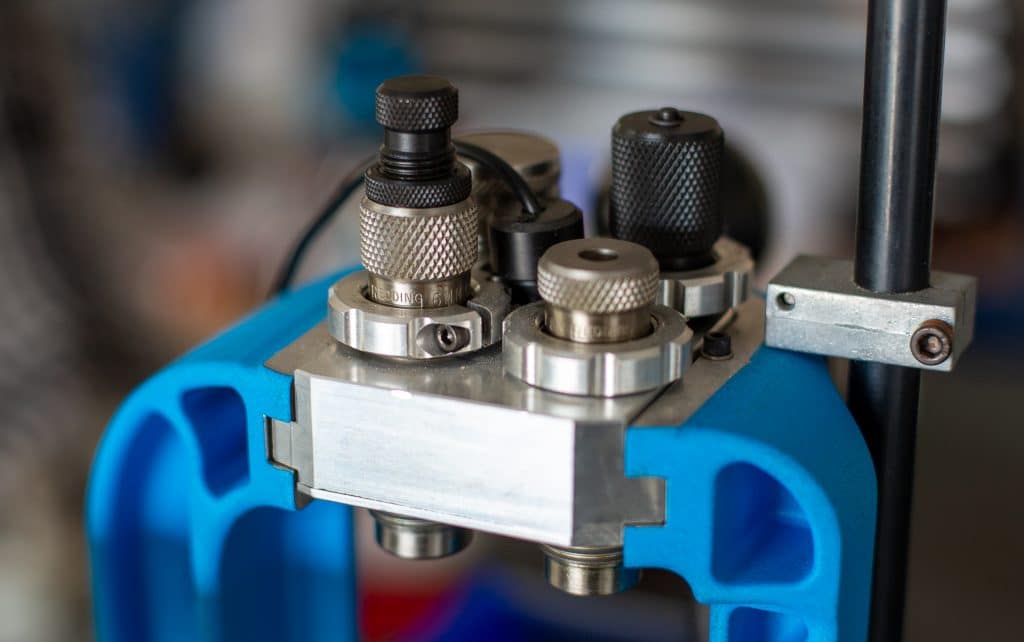
Toolhead
So, moving up to the toolhead where the dies are held – I replaced the standard unit with a Whidden Toolhead. The Whidden is manufactured to a higher standard and also clamps down into the system. This ensures everything mates up nicely – and – also prevents one die from pushing the head around and affecting the alignment and operation of the three other heads.
Of course, if you clamp the head, then ideally you also want to float the dies themselves – this is a large part of the appeal in the design and function of a press like the Co-Ax – the dies float and are able to align themselves with the brass.
This is achieved in the Whidden heads by ‘floating’ each of the dies and holding them in place individually with special rings. These rings can move a little (float) but are pinned in place so they cant rotate.
The standard head floats two of the dies, but as I changed how I used the system, I ended up modifying a head and floating everything within it – more on the die setup soon.
This gave me a solid foundation in regards to the press itself. But how do I use it?
Powder Measuring
So – probably the most significant factor in improving the load quality – specifically reducing ED/SD of the ammo produced – was improving on the powder throw system – and initially, I played with various ways of doing so.
There are replacement powder bars available, and when I first got the 550 (model B) – you would put a powder baffle in it to help things. This is now standard on the C version – but it still wasn’t good enough to get constant throw (enough for me).
In the end, like the 6.5 Guys and Mr Tubb, I pulled the whole powder throw unit out, replaced it with a powder funnel and reverted to throwing and weighing each powder charge individually. I still do this, but additionally, I have now totally separated the charge and seat part of the process into a separate press setup.
Head Setup
The general methodology I found online for this was to have two heads set up. Head number one is for brass prep – deprime and resize and then throw powder and seat with a separate head on a second run.
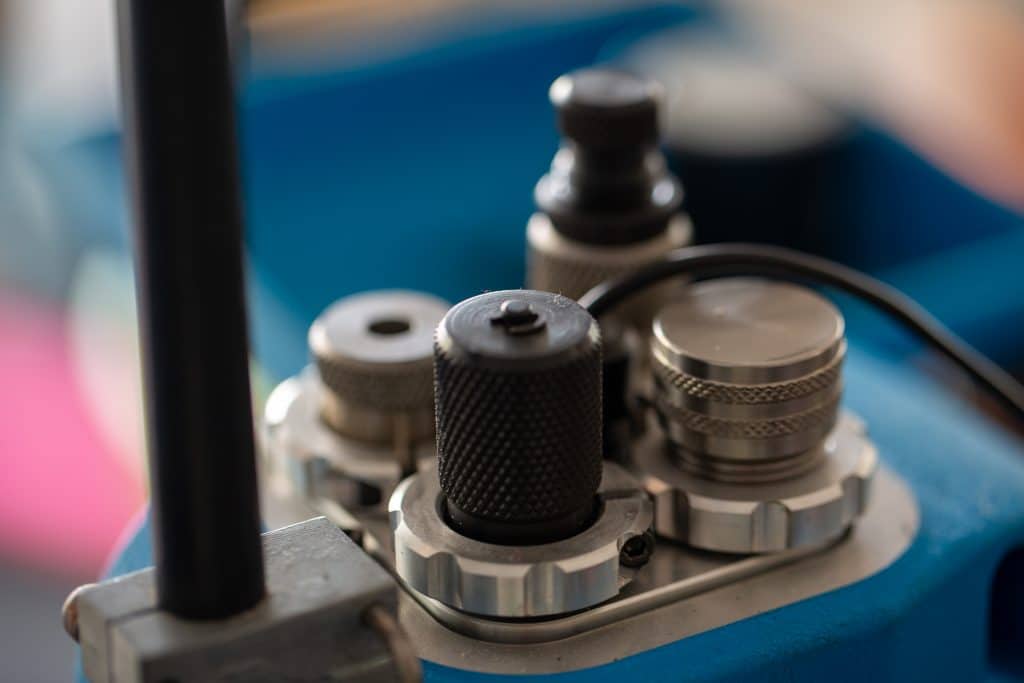
Head Number One
My order of operation and the dies used for head number one is as follows:
- Deprime using the Redding Universal Deprimer (small primers will need small pin)
- Resizing of body (Redding Body Die)
- Resizing of Neck (Redding Bushing Neck Die)
- Mandrel Explander (Forster Die and Mandrel)
The body die is set up to only just push back the shoulder. I have seen too many guys having issues at the range with only neck sized brass. Field shooting (and hunting) requires having to run stuff hard and sometimes in less than optimal conditions – but it needs to run. So I full length resize (a minimum) each and every time.
The bushing is also set to work the brass a minimum and the expander mandrel is what actually sets neck tension. You can go and listen to my chats with Robin from Redding Reloading as to why I do it this way.
Essentially, I feed the Dillon with the cleaned and annealed brass (thrown into a tumbler for a couple of hours and annealed on the AMP) and out it comes, resized, reprimed and ready for the next step.
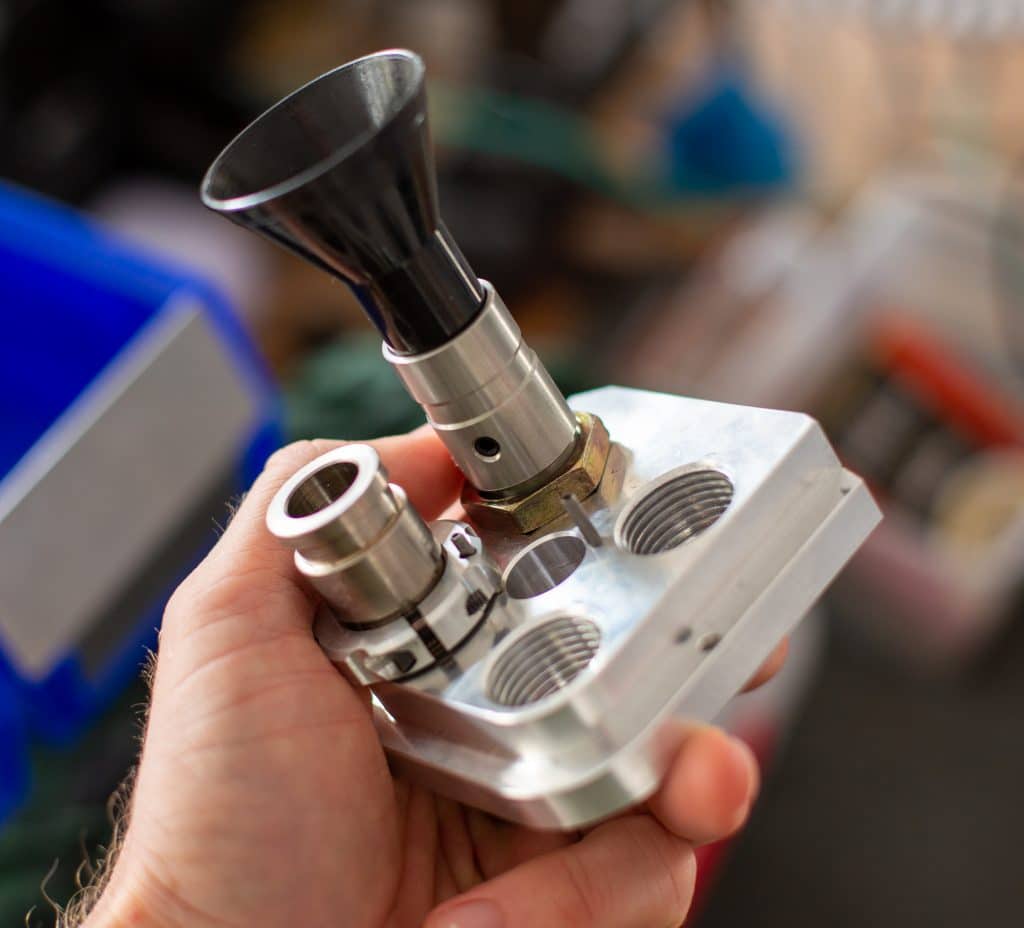
Head Two – decomissioned
At this point, guys change out the toolhead in the Dillon, then charge and seat projectiles. It occurred to me that I had another press station – which I now have permanently set up with the seating die. This is either the Co-Ax or the Redding Turret press – depending on if I want to also measure the seating with the Instant Indicator (though I don’t see much if any variation using the Competition Seating Die anyhow).
This way, I don’t have to change anything around – and simply move around the desk between ‘passes’.
Is it better? Is it faster?
Well – from a quality perspective, I can make match ammo that is single digit SD, sometimes also ES, and the gun (and ammo) shoots better than I can. So. Yeah. Good enough!
In regards to speed – if I was doing this on a single stage it would logically take at least five times the time (five heads, single-stage), and I would also have to change tools around. I could speed that up by using the Redding Turret, but you still would only be performing one task at a time, and I could combine dies by full length resizing with a bushing die, decapping at the same time, and skip the mandrel – however – I like the mandrel, and splitting up the tasks as I have found it gives me better results in the form of better concentricity of both brass and seated projectile.
So. Should you consider doing it? Depends.
I already had the kit and just got the upgrades. If I was only doing hunting loads – and 20 rounds could last me a year, then no, I don’t think I would bother.
But the last competition I went to, I took 120 rounds with me and shot them all over the weekend. If that is regular for you, then yes, maybe a progressive could work into your workflow well.


